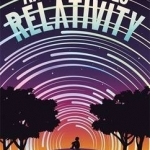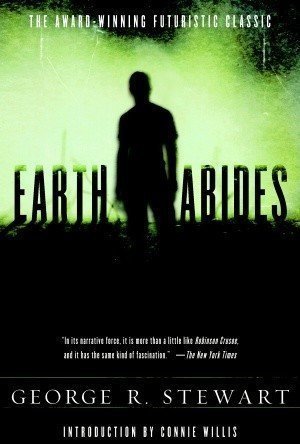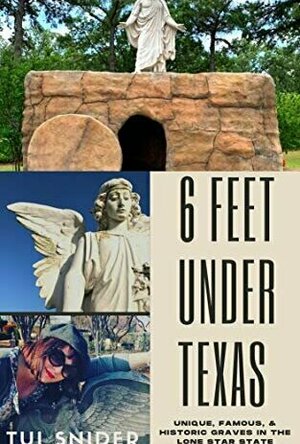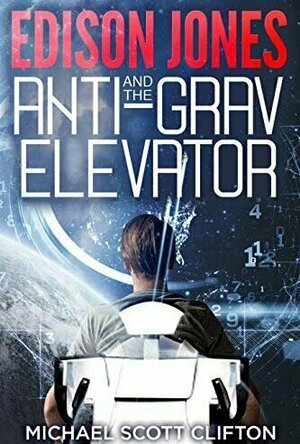Louise (64 KP) rated Relativity in Books
Jul 2, 2018
Relativity follows Ethan Forsythe, twelve years old and a very clever young man who has a particular obsession with physics and astronomy. Ethan lives with his single mother Claire in Sydney, as he is getting older he is asking more and more questions about his fathers whereabouts which Claire is particularly hesitant about answering and very mysterious much to Ethans annoyance.
When Ethan gets taken ill, secrets start to unfold and the reasons for his current illness are revealed and how it's connected to his past and father.
I had never heard of Relativity until I was asked to do this Blog Tour, I like to go into books knowing as little as possible so I can form my own opinions and not waiting for twists and turns. Relativity took me by surprise,this is what you would classify as family drama/literary fiction and I devoured this book, needing to know what happened, why Ethan was ill? Why his father wasn't around?
I thought the writing style and prose of this book are beautifully written. I also liked the science parts even sometimes when I couldn't get my head around (I am not great at science). You don't have to be great at physics to follow this book but I think Antonia Hayes must have put a lot of research into the topics that were explored within.
The story is told from third person past tense narrative from the perspectives of Ethan, Claire and Mark. The characters are well-developed,complex and three dimensional. Ethan's character was written really well and believable for a twelve-year-old boy, he would say some profound things and had me laughing out loud.
Mum,want to know something crazy? Statistically, the probability that I exist is basically zero. Did you know you were born with two million eggs?
I could really empathise with Claire, being a parent myself you will do anything to protect your child and what you feel is best for them. Her anxiety that she was experiencing was palpable, what with introducing Mark back into Ethan's life but there were points where I felt she made some bad decisions and should have discussed it more with Ethan.
I liked reading from Marks perspective, especially towards the end when you get more of a back story, though there is parts sprinkled throughout the book about their relationship and extended family.
Relativity is beautiful, realistic and a well researched novel and definitely recommend picking it up. This is a great debut novel and I am excited to see what Hayes does next.
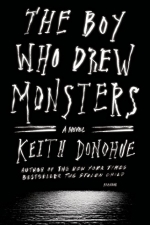
The Boy Who Drew Monsters
Book
From the New York Times bestselling author of The Stolen Child comes a hypnotic literary horror...
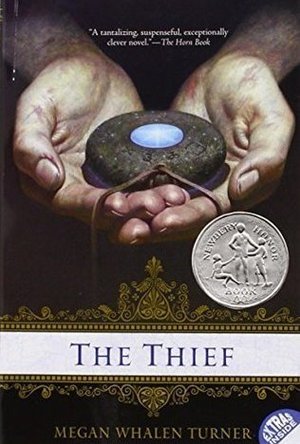
The Thief (The Queen's Thief #1)
Book
Discover the world of the Queen's Thief New York Times-bestselling author Megan Whalen Turner's...
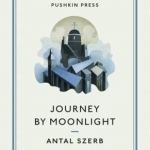
Journey by Moonlight
Antal Szerb, Len Rix and Eoin Ryan
Book
A major classic of 1930s literature, Antal Szerb's Journey by Moonlight (Utas es Holdvilag) is the...
Lilyn G - Sci-Fi & Scary (91 KP) rated Earth Abides in Books
Jun 2, 2018
I think this book had to have made some waves when people first started reading in. Published in 1949 and it features an interracial union and espouses a life better without God in it? Yowzers.
I frequently disliked the main character. Isherwood Williams is the type of man that – while I might admire his mind – I would frequently want to thump. He’s full of himself. He’s so cynical about the ‘simplicity’ of the people around him. And, of course, he’s completely human, and there’s the rub. We look for a ‘hero’ in these types of books. Ish is no hero. He’s someone who had the ‘luck’ to survive the end of the world, and now he’s got to live in it. But the world changes – doesn’t it always? And Ish isn’t a King of old. He’s just the head of his Tribe.
Earth Abides feels timeless. I have read many post-apocalyptic books, and they’ve grown tiresome. I approached this book with some caution, because I was afraid of more of the same drivel that is wonderful the first few times you read it, and then swiftly approaches “Been there done that” with disturbing ease. I didn’t want to dislike this book because I was bone-weary of the sub-genre. Thankfully, that wasn’t the case. Because, for all the post-apocalyptic books I’ve read, I don’t think that I’ve ever read a novel like Earth Abides. It also feels the most real. This is how the world goes on; earth abides while humanity fumbles along.
I won’t deny that the main reason I’m making the connection between the two is because I just recently read it, but I could not help but think of McCammon’s Boy’s Life when I finished Earth Abides. I am not someone who self-describes as liking ‘literary fiction’. I’m happy with my genre jollies, thankyouverymuch. I’ll admit to even wrinkling my nose at the idea of reading ‘literature’. However, I think both Earth Abides and Boy’s Life are perfect examples of books that show the appeal of that type of book. They’re not 600 pages long and packed with five dollar words, yet they don’t fit into any particular genre, and they make you think far more than they entertain you.
Here are a few of my favorite quotes:
“If there is a God who made us and we did wrong before His eyes—as George says—at least we did wrong only because we were as God made us, and I do not think that He should set traps. Oh, you should know better than George! Let us not bring all that back into the world again—the angry God, the mean God—the one who does not tell us the rules of the game, and then strikes us when we break them. Let us not bring Him back.”
“Man has been growing more stupid for several thousand years; I myself shall waste no tears at his demise.”
“During ten thousand years his numbers have been on the upgrade in spite of wars, pestilences, and famines. This increase in population has become more and more rapid. Biologically, man has for too long a time been rolling an uninterrupted run of sevens.”
Earth Abides really does deserve it’s spot on the “Must Read” list folks. Its hard to talk about but easy to read. You’ll need some quiet to be able to really appreciate it. Take as long as you need to take with it. I actually walked away from it for a week or so because I have an attention span the length of a gnat, but was drawn back to it, and able to pick up right where I left off.
6 Feet Under Texas by Tui Snider is a book for those who love history as well as for those who have an appreciation for cemeteries and the people who are buried there. Snider goes all over (mostly) north Texas to talk about the history behind some of the graves famous, infamous, and the just plain interesting. As always, Tui Snider has done excellent research for her book, and it really does show the dedication behind it all. In fact, Tui Snider solved the mystery about the identity of the one legged rope walker who's buried in Corsicana. The photos included in the book aren't in color, but I enjoyed them just the same. It was nice to place the story to the photo. I also appreciated Tui Snider placing each city in alphabetical order for easy findings. She also includes the address to where each cemetery is located after each story in case you wanted to visit.
I will admit that many books, I skip the intro. However, I know that Tui Snider never writes a dull and boring intro for her books. 6 Feet Under Texas' intro did not disappoint. Snider talks about how cemeteries are not morbid at all and how cemeteries are actually for the living. Seriously, read the intro. It is short and so very interesting!
I learned so much reading 6 Feet Under Texas. For example, did you know there was such thing as a backronym? I sure didn't until I read about Amber Hagerman, the little girl from which the AMBER Alert was invented. Tui Snider discusses about Amber's case and gives us an English lesson as well! There's also a touching story about a reverend who took in single mothers back in 1894, a time when society shunned those who weren't married. That story really warmed my heart. In Danville, a young woman by the name of Karen Silkwood is buried. She died under mysterious circumstances back in 1974. The mystery of Silkwood's death definitely left me intrigued. Her story was also very interesting. I learned that in the olden days, scraped graveyards were commonplace. Tui Snider explains that the grass from cemeteries was scraped because the lawn mower actually wasn't invented until 1830, and lawn grasses weren't a thing until the 1930s. Grass, back then, was home to all sorts of snakes and insects, and dry grass could catch on fire easily. So back then, people would get rid of all the grass growing around graves. It's pretty interesting to read about. I also read about Marlene Johnson in 6 Feet Under Texas. Marlene Johnson was the first female postmaster for Eastland, Texas. She made a huge mural out of millions of postage stamps. I loved reading about Mrs. Johnson, and I believe others will too. I was intrigued by Anthony Bascilli's grave. He went all out for his grave including having brick walls around his coffin, doors leading down to his coffin, and pipes sticking out of his coffin where keys to the door were to be dropped. Those pipes are still visible above ground if you take a trip out to the cemetery in Thurber, Texas.
It's not just humans that Tui Snider includes in her book 6 Feet Under Texas. Did you know that back in the day, it was a normal thing to have your limbs buried? For example, there are true stories of people burying amputated limbs and having grave markers made for them. What I really loved was how Tui Snider also mentions animal burials. She discusses the Alamo cats who are buried at the Alamo. (I had no idea that the Alamo had official cats!) She also writes about other animals that were special in some form, but I really loved reading about the Texas horned lizard that had been buried alive for thirty-one years and came back to life when he was exhumed.
I could go on and on about how amazing Tui Snider's newest book is, but you are better off just reading it for yourself. This was one of those books where I never wanted it to end. Luckily, Tui Snider is making a volume 2! I would definitely recommend 6 Feet Under Texas by Tui Snider to everyone that would love to go on a real life adventure without leaving wherever their reading Snider's book from. Seriously, pick up your copy of 6 Feet Under Texas so you can understand why I gushed so much on this book!
--
(A special thank you to Lone Star Literary Life for providing me with a paperback copy of 6 Feet Under Texas by Tui Snider in exchange for an honest and unbiased review.)
The Bandersnatch (199 KP) rated Dracula in Books
Nov 7, 2019
Dracula was published in London in May 1897 by Archibald Constable & Company and was later copyrighted in the U.S in 1899 and published by Doubleday & McClure of New York. Despite having decent praise form reviewers it wasn't an immediate bestseller. Although the English newspaper the Daily Mail ranked Stoker's writing prowess in Dracula above that of Mary Shelly, Edgar Allen Poe and Emily Bronte's Wuthering heights. Unfortunately it didn't make Stoker that much money and he'd had to petition for a compassionate grant from the royal literary fund. When he died his widow was forced to sell his notes and outlines of the book at an auction in 1913. It was the unauthorised adaption of Nosferatu by F. W. Murnau in 1922 and the resulting legal battle made when Stokers widow took affront that the novels popularity began to grow.
Before writing Dracula Bram Stoker had been researching European folklore and stories of vampires having been most influenced by Emily Gerard's “Transylvania Superstitions” 1885 essay...which included content about the vampire myth. Some historians insist that Vlad iii Dracula (More commonly known as Vlad the impaler) was the model for Stokers count but there's been no supporting evidence to make that true. According to one expert Stoker only borrowed the barest minimum of information of the Wallachian tyrant and he's not even mentioned in Stokers notes. Stoker was a member of the London library during the 1890's where books by Sabine Baring-Gould, Thomas Browne, AF Crosse and Charles Boner are attributed to Stokers research. Stoker would later claim he'd had a nightmare caused by over-eating crab meat about a “Vampire king” rising from his grave. Whitby on the Yorkshire coast contributed its landscape since Bram Stoker often holidayed there during the summer.
Dracula wasn't Stokers first choice as title for the story since he cycled through The Dead Un-Dead then simply the Un-Dead the count wasn't even supposed to be Count Dracula having had the name Count Wampyr for several drafts before Stoker became intrigued by the name Dracula. After reading “An account of the principles of Wallachia and Moldavia with political observations relative to them” written by author William Wilkinson (Published in 1820). the descendants of Vlad ii of Wallachia took the name Dracula or Dracul after being invested in the Order of the Dragon in 1431. In the old Romanian language the word Dracul mean “the Dragon” and Dracula meant “Son of the Dragon”. Nowadays however Dracul means “the Devil”
Whilst Dracula is known as THE Vampire novel its not the first. Johan Wolfgang Von Goethe had his book the Bride of Corinth published in 1797, 1871's Carmilla (a story about a lesbian vampire) was written by Sheridan Le Frau and James Malcolm Rymer's penny dreadful series Venny the Vampire was a product from the mid Victorian period. Even John Polidori created an image of a vampyric aristocrat in his 1819 story The Vampyre when he spent a summer with Merry Shelly (creator of Frankenstein) and her poet husband Percy Bysshe Shelly and Lord Bryon in 1816.
I really love Dracula. It showed the madness, the ethereal quality and the ultimate danger of what a vampire could do. Like many other goth inclined teenagers trying to find their feet in the world Dracula definitely added its two cents to my self worth and love of all things macabre. The fact it was written by a Victorian writer has added a unusual depth to the story as only a Victorian writer could. The culture of the Vampire has become deep rooted and wide spread in its acceptance and Dracula has definitely spearheaded such a phenomenon.
Abraham “Bram” Stoker was Born in Dublin, Ireland on the 8th of November 1847, He was the third of seven children born to Abraham and Charlotte Stoker and was bedridden with an unknown illness until he recovered at seven. He started schooling at a private school run by the Reverend William Woods and grew up without serious illness. Stoker excelled at sports at Trinity College Dublin having graduated in 1870 with a BA (Bachelor of Arts). He was an Auditor of the College Historical Society and the president of the University Philosophical Society where his first paper was on Sensationalism in fiction and society.
Thanks to his friend Dr. Maunsell, Stoker became interested in the theatre as a student and whilst working for the Irish civil service he became a theatre critic for the Dublin evening mail where he attracted notice for the quality of his reviews. Stoker gave a favourable review of Henry Irving's adaption of Hamlet in December 1876, this prompted Irving to invite him to dinner where they ended up becoming friends. Stoker wrote The Crystal Cup which was published by the London society in 1872 and The chain of Destiny which was released in four parts in the Shamrock. Stoker also wrote the non-fiction book the duties of clerks of petty sessions in Ireland which was published in 1879.
Bram stoker married Florence Balcombe the daughter of a lieutenent-colonel in 1978 and they moved to London. Where Stoker ended up the Business manager of the Lyceum theatre as well as manager for Henry Irving- a position he held for 27 years. Despite being a very busy man Stoker ended up writing several novels (as well as Dracula) Including The Snakes pass in 1890, the lady of the shroud in 1909 and the lair of the white worm in 1911. when Henry Irving died in 1906 he published his personal reminiscences of Henry Irving. Stoker also managed productions at the Prince of Wales theatre.
Bram stoker died after a series of strokes in London on April 20th 1912, the cause of death is split between the possibility of Tertiary Syphilis or overwork. He was cremated and was placed in a display urn at Golders Green Crematorium in North London, he was later joined by the ashes of his Son Irving Noel Stoker in 1961, his wife Florence was meant to join them but her ashes were scattered at the Gardens of rest.
Stoker was honoured with a Google Doogle (the banner on goggles homepage) on November 8th 2012 commemorating the 165th anniversary of his birth. An annual festival in honour of Bram Stoker happens in Dublin, its supported by the Bram stoker estate and was/is usually funded by Dublin City Council and Failte Ireland.
My opinion of Bran stoker is that of a decent hard working man who loved life. Stoker epitomises the phrases of “a man on a mission” and “a man who hussles”. Having worked extremely hard both creatively as a novelist and business wise as a theatre manager Stoker pretty much showed that if you work hard you could pretty much do anything you set your mind to.
And there you have it a book for all the ages, definitely under the banner of AWESOME!!!.
Heather Cranmer (2721 KP) rated Edison Jones and The ANTI-GRAV Elevator in Books
Apr 2, 2020
Edison Jones is a 12 year old seventh grader. After a car accident (that really wasn't an accident) left him paralyzed from the waist down and killed his parents, he's been living a very sheltered life with his grandpa. Edison isn't like most 12 year olds though. He's highly intelligent and has come up with a way to invent a anti-gravity space elevator. He's just go to prove to NASA that it works. Oh, and he's also being enrolled into the local public junior high school for the first time which also presents problems of its own. Edison will have to prove his space elevator has what it takes while also navigating the new realm of school and friendship if he's going to make his dreams come true.
The plot for Edison Jones and The ANTI-GRAV Elevator definitely was an interesting one for sure. While there are similar books out there, Michael Scott Clifton really made his book stand out. I liked how the main character had a disability which made it harder for him when it came to everything. It's refreshing to see a main character that's different from the mainstream. There is a bunch of science speak and terminology which can be a little overwhelming for the average person, but eventually, you get used to it. Plus, you don't need to know all of the terminology to enjoy this book. Context clues are also available to help make the terminology a bit more understandable. Descriptive scenes abound throughout this novel which makes it very easy to get lost in this book. In fact, many times I forgot where I was because I was so focused on this novel. The anticipation that Clifton sets up for major events throughout Edison Jones and The ANTI-GRAV Elevator is done brilliantly. I was definitely holding my breath and turning the page quickly to find out what would happen next especially when it came to scenes with the Breakstone twins, the robotics competition, the last junior high football game, and the launching of Edison's space elevator! The build up in those scenes was amazing! The ending does leave the possibility of another Edison Jones story being released in the future.
One thing that did irk me quite a bit was the stereotype that all of those who live in mobile homes are trashy. I felt like the author played into that a bit too much during one chapter. Here's one example which can be found at the end of chapter 26 when discussing Markie Franks who is a bully and Hondo's house (Hondo, Edison's friend, comes from a home where his mom chooses her boyfriend over him, and the boyfriend and Hondo don't get along.): "Markie's house surprised Edison. Although more modest than Bree's, it was also a brick home with an immaculate yard and appearance. He wasn't sure what he expected--maybe a mobile home with rusting cars on blocks in the yard--not the tidy home the bully lived in. Hondo...did live in a mobile home complete with a yard full of foot-high weeds. The only light came from the blue flicker of a TV through a grimy window next to the front door. With a grimace, Hondo got out and waved, his shoes pushing a path through the brown weeds and grass." It's stereotypes like this that make those who live in mobile homes easy targets for bullying as well as making those that live in mobile homes feel horrible about their life. It really shouldn't have been discussed like this at all. Not everyone who lives in a mobile home is trailer trash which is what I felt this book was implying.
I did feel like all the characters in Edison Jones and The ANTI-GRAV Elevator where very fleshed out and realistic. Edison is extremely intelligent when it comes to science, but he struggles with fitting in as he's been sheltered his whole life. Even though Edison isn't your average 12 year old when it comes to smarts, it was refreshing to see just how average he was when it came to navigating friendships and romance. I loved reading about Edison's thought process when it came to his crush on Carly as well as his friendship between Bree, Hondo, and Carly. I liked how Edison, for the most part, wouldn't give that bully, Markie Franks, the satisfaction of knowing that he bothered him. I admired Hondo after all he had been through. Throughout most of the book, I was trying to figure out if Hondo was a genuine person or if he would end up double crossing Edison. Bree and Carly were great friends to Edison, and it was obvious how much they admired Edison. I liked how they would stand up for him. The Breakstone Twins were also very interesting. I can't wait to see more of them in future books (if the author chooses to make this a series). I liked how cunning and calculated they both were.
Trigger warnings for Edison Jones and The ANTI-GRAV Elevator include some profanity, name calling including using the word pussy which I didn't like, some stereotyping, some violence, bullying, attempted murder, murder, a mention of drugs (being stoned), some underage smoking, and a mention of beer.
All in all, Edison Jones and The Anti-GRAV Elevator is a fantastic story that straps you in for a very exciting adventure throughout its pages. The plot is fantastic, the characters are diverse, and the action abounds. I would definitely recommend Edison Jones and The ANTI-GRAV Elevator by Michael Scott Clifton to those aged 13+ who seek adventure in their life. This would appeal mostly to those interested in science, but I think everyone who enjoys a solid story would like it.
--
(A special thank you to Lone Star Literary Life for the tour and to Michael Scott Clifton for sending me a paperback of Edison Jones and The ANTI-GRAV Elevator in exchange for an honest and unbiased review.)
Cyn Armistead (14 KP) rated Enthralled: Paranormal Diversions in Books
Mar 1, 2018
"Giovanni’s Farewell" by [a:Claudia Gray|1192311|Claudia Gray|http://photo.goodreads.com/authors/1234643683p2/1192311.jpg] is a sweet, coming-of-age story of sorts. The twist is that it features a brother and sister, twins, rather than just one person. They visit Rome with a school group while dealing with major changes in their lives. There was too much background crammed into a short story, but it was interesting.
[a:Carrie Ryan|1443712|Carrie Ryan|http://photo.goodreads.com/authors/1343410049p2/1443712.jpg]'s "Scenic Route" is a disturbing, post-apocalyptic story set in the world of [b:The Forest of Hands and Teeth|3432478|The Forest of Hands and Teeth (The Forest of Hands and Teeth, #1)|Carrie Ryan|http://photo.goodreads.com/books/1320633297s/3432478.jpg|3473471] about two young sisters trying to survive in an isolated cabin. The older sister keeps the younger one occupied with the planning of a road trip that will never happen, always hoping against hope that the girl won't realize what their reality is. How long can they stay isolated enough to survive? Bloody, frightening, and visceral.
"Red Run" by [a:Kami Garcia|2895706|Kami Garcia|http://photo.goodreads.com/authors/1289693388p2/2895706.jpg] is the story of a girl who has lost the only person she loves in the world, and the trip she takes to avenge his death. How do you hunt a ghost? Maybe it isn't fair, coming right after Ryan's story, but I didn't truly feel the main character's feelings.
[a:Jackson Pearce|2761947|Jackson Pearce|http://photo.goodreads.com/authors/1336840299p2/2761947.jpg]'s "Things About Love" is a sweet story involving a jinn researching love. I felt like I'd come into the middle of something, so I checked and found that she's written a novel, [b:As You Wish|6750586|As You Wish|Jackson Pearce|http://photo.goodreads.com/books/1319175193s/6750586.jpg|6217232], in the same setting. While this story technically stands on its own, it would probably be enriched by having read As You Wish.
"Niederwald" by [a:Rachel Vincent|415967|Rachel Vincent|http://photo.goodreads.com/authors/1262900481p2/415967.jpg] is the first story I've read in her Soul Screamers series. Sabine, a macha (nightmare), takes a road trip with a human acquaintance and detours to Niederwald, Texas, home to the harpies. No, there's no way that could go wrong. Of course you know from the moment they hit the parking lot that it will go wrong, but at least it's an interesting sort of wrong.
[a:Melissa Marr|175855|Melissa Marr|http://photo.goodreads.com/authors/1192302741p2/175855.jpg]'s "Merely Mortal" feels as though it's probably set in the same world as her Wicked Lovely series.
"Facing Facts" by [a:Kelley Armstrong|7581|Kelley Armstrong|http://photo.goodreads.com/authors/1199068298p2/7581.jpg] is set in her Darkest Powers universe. I read the first of those books, but obviously a lot has passed since then, and there were spoilers in this story. It really centers around Chloe and Tori, with a little Derek tossed in. Tori learns something she doesn't want to know and reacts badly, running off on her own, which is dangerous. Chloe goes after her and they get into trouble. That seemed rather predictable to me, but at least the type of trouble wasn't what I expected. Tori doesn't seem to have changed since the first book, but Chloe is coming into control of her abilities.
[a:Sarah Rees Brennan|836009|Sarah Rees Brennan|http://photo.goodreads.com/authors/1254149255p2/836009.jpg]'s "Let’s Get this Undead Show on the Road" is about a boy band that features a vampire, Christian. He's an unusual vampire, all alone without a nest or a sire. His journey seems to be about his identity as a vampire, although the band is on tour and has another sort of journey to make, as well.
"Bridge" by [a:Jeri Smith-Ready|56019|Jeri Smith-Ready|http://photo.goodreads.com/authors/1204922569p2/56019.jpg] is told from a ghost's point of view, 233 days after death. It's frustrating being a ghost, because most people can't see or hear you. There are things you have to accomplish before moving on, though, that require communication with the living. Finding a "bridge" and working things out takes a lot of effort. This was a touching story, bittersweet and well-told.
[a:Kimberly Derting|2755160|Kimberly Derting|http://photo.goodreads.com/authors/1229976464p2/2755160.jpg]'s "Skin Contact" nearly broke me. Rafe is looking for his girlfriend. He knows where he needs to go, and he's guided by dreams. This story nearly broke me. It's told sparingly, and something feels perfectly right about it, but it hurts. According to her author biography, Rafe was introduced in her novel Desires of the Dead.
"Leaving" by [a:Ally Condie|1304470|Ally Condie|http://photo.goodreads.com/authors/1325882614p2/1304470.jpg] is a very literary story, about a girl left behind after her mother dies and her father leaves. She spends the story preparing to go after her father. It's hard to describe much more than that, or to have much of an opinion. It was well-written and I think I'll probably remember it for a long time.
[a:Jessica Verday|1290625|Jessica Verday|http://photo.goodreads.com/authors/1243816082p2/1290625.jpg]'s "At The Late Night, Double Feature, Picture Show" is a darkly funny story about a girl from a family of monster hunters. She's usually the bait, but tonight she has decided to be the hunter — without backup. I'd like to read more from Verday.
"IV League" by [a:Margaret Stohl|2895707|Margaret Stohl|http://photo.goodreads.com/authors/1241421033p2/2895707.jpg] just didn't hit me right. It's the story of a bunch of southern vampires on a college tour, which could have been funny but wasn't written that way. The whole thing just didn't sit well with me, perhaps because the main character seemed too unrealistically out of touch for someone who obviously had access to television and the internet.
[a:Mary E. Pearson|123463|Mary E. Pearson|http://photo.goodreads.com/authors/1238978651p2/123463.jpg]'s "Gargouille" is the most touching love story in the collection. Just read it.
"The Third Kind" by [a:Jennifer Lynn Barnes|164187|Jennifer Lynn Barnes|http://photo.goodreads.com/authors/1243935916p2/164187.jpg] is, on the surface, about a road trip to San Antonio. The real journey is much deeper, one of coming to understanding one's calling.
[a:Rachel Caine|15292|Rachel Caine|http://photo.goodreads.com/authors/1272650500p2/15292.jpg]'s Morganville is the setting for her "Automatic." I think I've read a Morganville novella, but my memory of it is dim. The Morganville Blood Bank introduces an automated withdrawal machine, essentially a soda can dispenser. Michael Glass is ordered to try it first, as a demonstration for the older, more traditional vampires, with unexpected results. His journey is one of self-knowledge. I didn't really care much about him, his journey, his girlfriend, or anything else. The setting and characters do nothing for me, but your mileage may vary.
Altogether, the anthology was worth reading. There were some low spots, but that's true of any collection. To be fair, I'm sure someone who is more enthusiastic about young adult fiction would also be more enthusiastic about the works here.
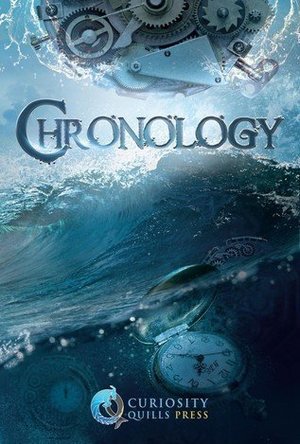
Curiosity Quills: Chronology
Richard Roberts, Tony Healey, Piers Anthony, J.R. Rain, Jordan Elizabeth Mierek, James Wymore, Stan Swanson, Darin Kennedy , Julie Frost , Andrew Buckley , J.P. Moynahan, B. C. Johnson, J. P. Sloan, Andrew J. Rausch, Katie Young , Scott Nicholson, Wilbert Stanton, Tara Tyler, Mark W. Woodring, J. E. Anckorn, Nathan L. Yocum, G. Miki Hayden, Matthew S. Cox and Matthew Graybosch
Book
It's time... for time! Embark on a literary journey through the ages with Curiosity Quills Press in...
